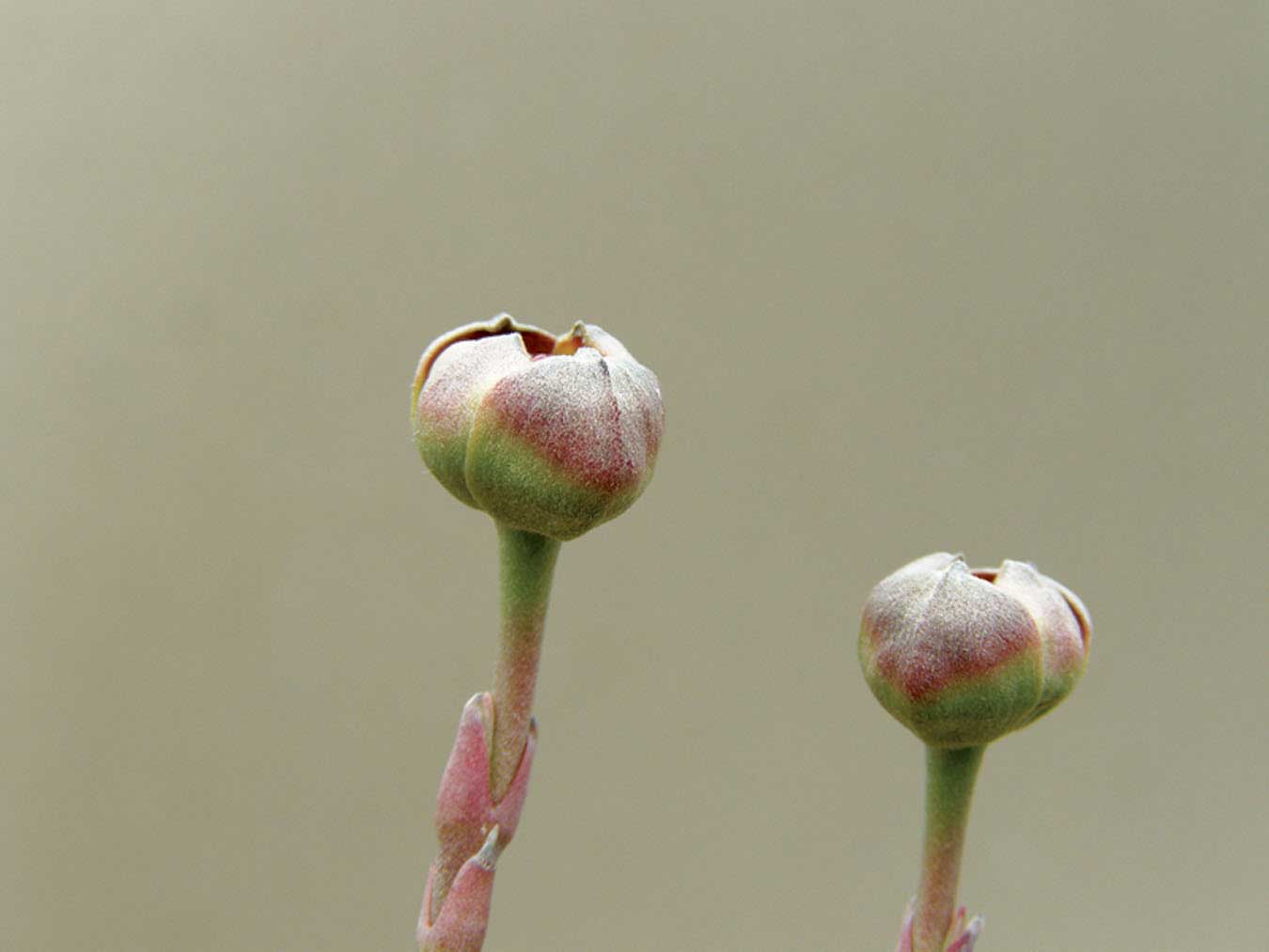Follow the redbuds and dogwoods

Redbud’s many shades of pink. Photo by Ken Moore
By Ken Moore
Flora Columnist
Native pink-flowered redbud, Cercis Canadensis, is right on schedule beginning its three-week-long flowering. It will be followed in a week or two by the pure-white Flowering Dogwood, Cornus florida. The combination of these two native trees’ spring awakenings gives us four to five weeks of flowering with a dramatic overlapping of the two.
In recent years, this extended beautiful beginning of our natural Piedmont spring has been overshadowed by the short, week-long blinding white explosion of the exotic Bradford Pear, Pyrus calleryana ‘Bradford’, over-planted along city streets and in parking lots and residential landscapes.
However, along rural highways, where one’s eye is not distracted by invading pears, you’ll find stretches of redbuds, beginning first with a hint of dark pink before the flowers fully open, brightening the forest edges with clouds of pastel pink. I really want to call redbud “pinkbud,†and I wonder that perhaps some colorblind botanist never really appreciated this tree’s progression through the full spectrum of pink colors.
Some folks enjoy tasting the buds and young flowers as a sweet snack. If you are so inclined, then you can’t avoid appreciating how much the mature pale-pink flowers look like pea flowers. The telltale bean pods hanging from the tree in the late summer let you know that this tree is indeed a member of the bean family. And the distinctive lime-green, heart-shaped leaves are a delight to behold through the long growing season.
Now, before the redbuds begin turning over their show of pink to the white of dogwoods, get up close to a dogwood and look for its flower buds. The flattened, flyer saucer-shaped flower buds perched upright on short stems were visible as early as the beginning of last fall. Closer examination will reveal four bracts tightly enclosing each swollen bud. Keep a constant watch on those buds and you may be surprised to witness those four bracts unfolding and enlarging, turning from green to pure white, as they become what we think of as the four petals of a dogwood flower.
They’re not petals at all. I still feel the wonder of discovery when I first learned that those four “false†petals were the magical expansions of the small bracts that protected that flower bud all winter. A hand magnifier will help you discover a tight cluster of several tiny yellow “true†flowers in the center of those four white bracts. Think ahead to next fall and realize that if successfully pollinated by insects, those little flowers will produce clusters of bright-red berries that provide essential nourishment for fall migrating birds.
I keep an eye out for seedlings of redbud and dogwood wherever they may appear in my yard and garden beds. When I spot one, I am quite likely to leave it in place to become a specimen plant, having learned that what nature plants generally succeeds better than what I plant.
At this season of the spring equinox, take time to enjoy and be appreciative in following nature’s several-week progression of redbuds and dogwoods.
Email Ken Moore at flora@carrborocitizen.com. Find previous Ken Moore Citizen columns at The Annotated Flora (carrborocitizen.com/flora).

Watch Dogwood buds closely as they open to reveal the tiny yellow flowers within those four white bracts. Photo by Ken Moore
Comments are closed.